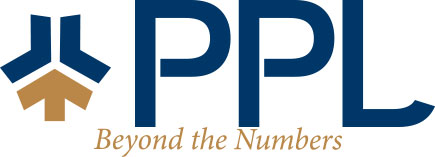The IRS urges everyone to update and secure their records to prepare now for natural disasters.
September is National Preparedness Month. With the height of hurricane season fast approaching and the ongoing threat of wildfires in many places, the Internal Revenue Service urges everyone to develop an emergency preparedness plan, or if they already have one, update it for 2022.
Everyone, from individuals to organizations and businesses, can start now by:
- Securing and duplicating essential tax and financial documents.
- Creating lists of property.
- Knowing where to find information once a disaster occurs.
In the aftermath of a disaster, having the updated documents and other information readily available can help victims apply for the relief available from the IRS and other agencies. Disaster assistance and emergency relief may help taxpayers and businesses recover financially from the impact of a disaster, especially when the federal government declares their location to be a major disaster area.
Start secure
Taxpayers should keep critical original documents inside waterproof containers in a secure space. These include tax returns, birth certificates, deeds, titles, insurance policies and other similarly important items. In addition, consider having a relative, friend or other trusted person retain duplicate copies of these documents at a location outside the potentially impacted disaster area.
Make copies
If original documents are available only on paper, try scanning them into a digital file format. Saving them in a secure digital location, like a cloud-based storage application, can provide added security and portability.
Document valuables
Maintain a detailed inventory of your property and business contents. Taxpayers can take photos or videos to record their possessions but should also write down descriptions including year, make and model numbers, where appropriate. After a disaster hits, this kind of documentation can help support claims for insurance or tax benefits. The IRS disaster-loss workbooks can help individuals and businesses compile lists of belongings or business equipment.
Employer fiduciary bonds
Employers using payroll service providers should check if their provider has a fiduciary bond in place to protect the employer against a possible provider default.
Most employers already use the Electronic Federal Tax Payment System (EFTPS) to make their federal tax deposits and business tax payments. Because these payments can easily be made either by phone or online, EFTPS offers an especially convenient option when a disaster may displace many businesses and their employees. It’s also easy to track tax payments and receive email alerts through EFTPS. Any business that doesn’t have one can create an EFTPS account by visiting EFTPS.gov.
Know where to go
Reconstructing records after a disaster may be required for tax purposes, getting federal assistance or insurance reimbursement. Most financial institutions can provide statements and documents electronically, an option that can aid the reconstruction process. For tips on reconstructing records, visit IRS’s Reconstructing Records.
IRS is ready to help
Following a federal disaster declaration, the IRS may postpone various tax filing and tax payment deadlines or provide other relief. For a list of localities qualifying for relief and details on relief available, visit the IRS Tax Relief in Disaster Situations webpage or Around the Nation on IRS.gov.
The IRS identifies taxpayers located in the covered disaster area and automatically applies filing and payment relief. This means taxpayers whose IRS address of record is located in the disaster area do not need to contact the IRS to get disaster tax relief.
In addition, many taxpayers living outside the disaster area may also qualify for relief. This includes those assisting with disaster relief and taxpayers whose records necessary to meet a filing or payment deadline postponed during the relief period, are located in the disaster area. Eligible individuals and businesses located outside the disaster area can request relief by calling the IRS disaster hotline at 866-562-5227.
In addition, a special rule allows both individuals and businesses to choose to deduct uninsured or unreimbursed disaster losses on either the tax return for the year the disaster occurred, or the return for the previous year. For more information, see Publication 547, Casualties, Disasters, and Thefts, available on IRS.gov.
For more information about National Preparedness Month, visit Ready.gov/September.

